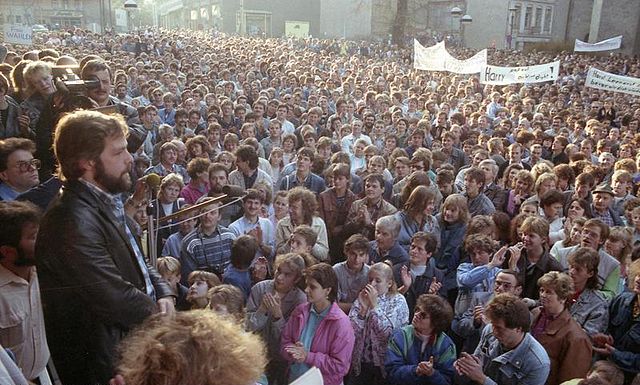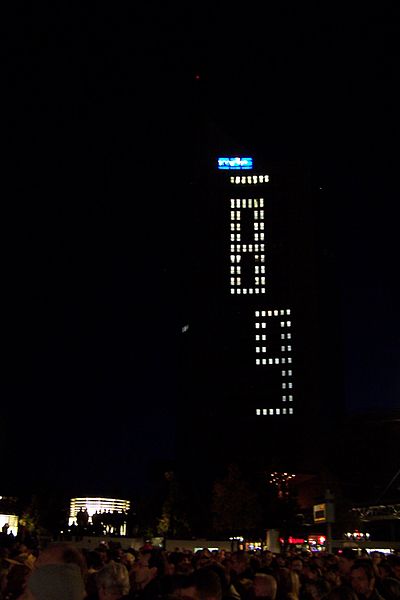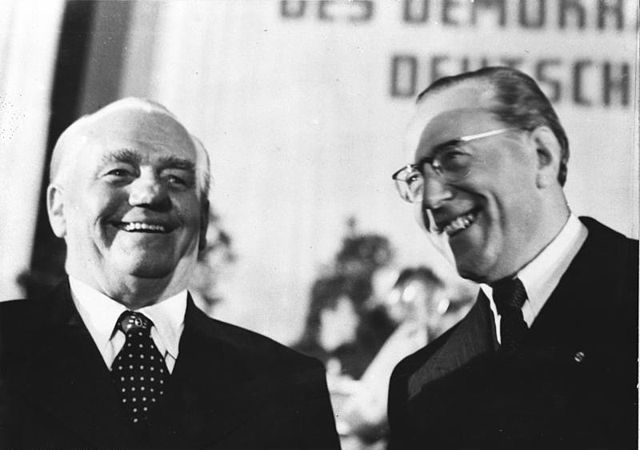Monday demonstrations in East Germany
The Monday demonstrations were a series of peaceful political protests against the government of the German Democratic Republic (GDR) that took place in towns and cities around the country on various days of the week from 1989 to 1991. The Leipzig demonstrations, which are the best known, took place on Mondays. The protests are conventionally separated into five cycles.
The Monday demonstrations helped to bring down the Berlin Wall.
Interior of the St. Nicholas Church
Demonstrators with banners. This demonstration took place after the fall of the wall.
Installation on the City Hochhaus for Festival of Lights 2009
East Germany, officially known as the German Democratic Republic, was a country in Central Europe from its formation on 7 October 1949 until its reunification with West Germany on 3 October 1990. Until 1989, it was generally viewed as a communist state and described itself as a socialist "workers' and peasants' state". The economy of this country was centrally planned and state-owned. Although the GDR had to pay substantial war reparations to the Soviets, it became the most successful economy in the Eastern Bloc.
GDR leaders: President Wilhelm Pieck and Prime Minister Otto Grotewohl, 1949
SED First Secretary, Walter Ulbricht, 1960
Erich Honecker, head of state (1971–1989)
Chancellor of the Federal Republic of Germany (West Germany) Helmut Schmidt, Chairman of the State Council of the German Democratic Republic (East Germany) Erich Honecker, U.S. president Gerald Ford and Austrian chancellor Bruno Kreisky signing the Helsinki Act








